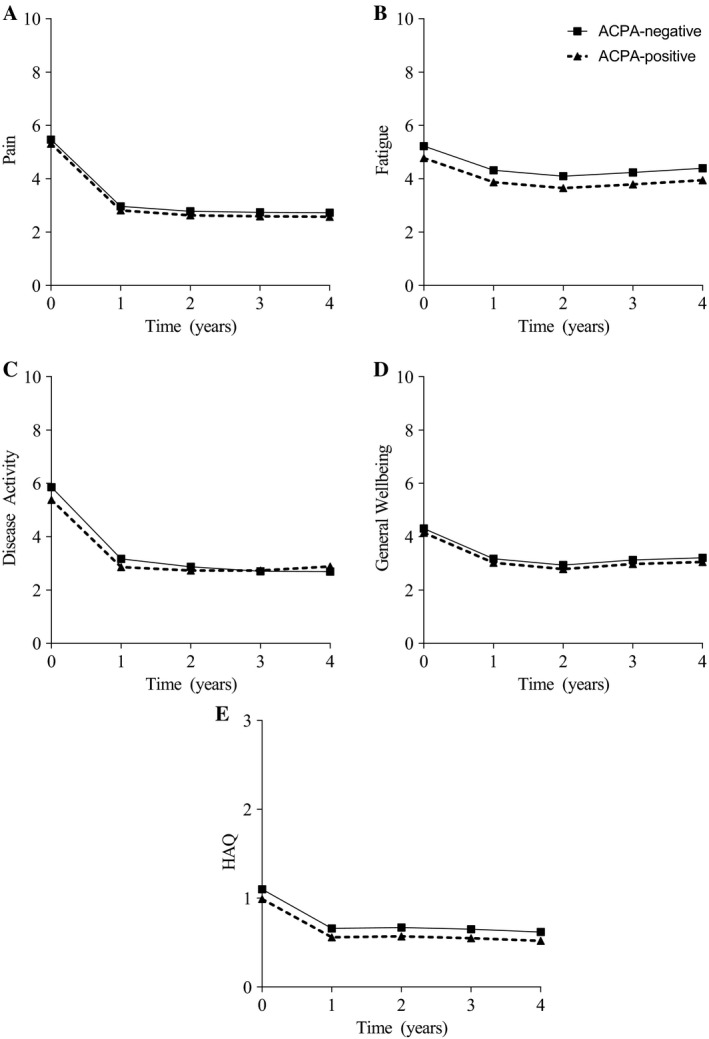Figure 3.

Patient‐reported outcomes of impairments and limitations of anti–citrullinated protein antibody (ACPA)–negative and ACPA‐positive rheumatoid arthritis (RA) patients fulfilling the 2010 criteria during 4 years of followup. Presented are median predicted values obtained by linear mixed models adjusted for age at inclusion, sex, and year of inclusion. In case of significance of the interaction between ACPA and time, this was added to the modeled figures. Pain, fatigue, disease activity, and general well‐being were measured by a numerical rating scale (range 0–10). Physical function was measured by the Health Assessment Questionnaire (HAQ) disability index (range 0–3). Both groups experienced equal pain; ACPA‐negative patients were more severely fatigued (P = 0.002, β = 0.53) than ACPA‐positive patients. Both groups had equal self‐reported disease activity, general well‐being, and HAQ. Following are the numbers of available data per followup year for ACPA‐positive patients for A, pain: 457, 316, 224, 240, 209; B, fatigue: 447, 276, 187, 202, 176; C, disease activity: 457, 315, 224, 239, 209; D, general well‐being: 449, 316, 223, 242, 210; and E, HAQ: 430, 268, 140, 221, 197. Following are the numbers of available data per followup year for ACPA‐negative patients for pain: 404, 257, 177, 165, 138; fatigue: 400, 232, 150, 143, 114; disease activity: 403, 257, 177, 166, 138; general well‐being: 401, 257, 175, 166, 139; and HAQ: 382, 224, 105, 147, 120.
